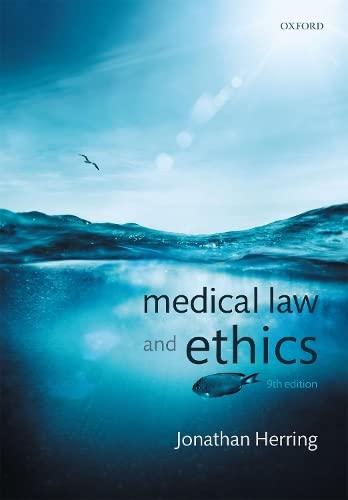Question
Answer these questions fast QUESTION 12 What is the primary purpose of tort law? to censure harmful behaviour to maintain a rights-respecting society to uphold
Answer these questions fast
QUESTION 12
What is the primary purpose of tort law?
to censure harmful behaviour to maintain a rights-respecting society
to uphold a victim's private rights by ensuring wrongdoers are criminally prosecuted
to compensate injured parties for the harm caused by the fault of another
to punish wrongdoers by imposing fines, imprisonment, or both
1 points
QUESTION 13
Which of the following is a feature that distinguishes intentional torts from negligence torts?
Intentional torts can also constitute criminal wrongs whereas negligent torts can never give rise to criminal liability.
Intentional torts can give rise to compensatory damages whereas only negligent torts can give rise to punitive damages.
Intentional torts require actual harm to the victim whereas negligent torts do not require the victim to prove harm resulted from the defendant's negligent conduct.
Intentional torts involve harmful acts committed on purpose whereas negligent torts can arise even where the wrongdoer did not intend to cause the event in question.
1 points
QUESTION 14
An individual can never owe a duty of care to a stranger.
True
False
1 points
QUESTION 15
What is the approach taken by Canadian courts with respect to awards for punitive damages?
Canadian courts always make awards of punitive damages in order to deter other potential wrongdoers.
Canadian courts normally only award punitive damages where the defendant's conduct was malicious, oppressive, or high-handed.
Canadian courts awards for punitive damages are usually higher than the awards typically granted in the United States.
Canadian courts do not award punitive damages unless the wrongdoer's conduct was criminal conduct.
1 points
QUESTION 16
What is the policy reason for imposing liability on commercial establishments such as bars to members of the public injured by the conduct of one of their drunken customers?
Bars are liable because the courts impose the doctrine of strict liability on those who serve alcohol.
Bars are liable because they are vicariously liable for their customers.
Bars benefit economically from serving drinks to their patrons and should therefore have a positive obligation to the risks arising from the inebriated conduct of their patrons.
Bars should be completely responsible even though the risks to the public are not reasonably foreseeable, because bars can reduce their liability by purchasing insurance.
1 points
QUESTION 17
The front entryway floor of a busy retail store is wet from improper drainage. The store is aware of the problem. Rosemary enters the store and slips and falls as a result of the buildup of water on the floor. What might the store's liability be dependent on?
Whether a store employee witnessed Rosemary's fall.
Whether Rosemary notified the store immediately after she was injured.
Whether or not the store took reasonable steps to mitigate harm.
Whether Rosemary could prove that she was not intoxicated at the time of the fall.
1 points
QUESTION 18
Reyna decides to go skiing for the first time. When buying her lift ticket, the ski resort requires Reyna to sign a waiver of liability form outlining the risks of skiing. Reyna signs this form. Later that day she breaks her leg when she falls on the ski hill. If Reyna sued the ski resort for damages arising from this injury, the ski resort may rely on the defence of voluntary assumption of risk.
True
False
1 points
QUESTION 19
The Libel and Slander Act governs the tort of defamation in Ontario.
True
False
1 points
QUESTION 20
The torts of assault and battery must always occur at the same time.
True
False
1 points
QUESTION 21
Matilda was sued by Ahmed for negligence following a car accident in which Ahmed struck Matilda's vehicle as she completed a left turn on a yellow light. Ahmed had accelerated as he approached the intersection after the light turned yellow and as a result he was found 75% contributorily negligent at the trial. If Ahmed's damages were $10 000 what is the maximum amount he could collect from Matilda?
$5000
$2500
$10,000
$7500
1 points
QUESTION 22
What is required in order to establish a tort claim for false imprisonment?
The plaintiff committed a crime was physically restrained and police were immediately called.
The plaintiff committed a crime but was threatened with physical harm in order to detain him.
The individual who lawfully restrained the plaintiff was not a police officer.
The plaintiff was physically restrained or psychologically coerced to stay without lawful justification.
1 points
QUESTION 23
A defence to a defamation claim is that the statement giving rise to the claim was "substantially true."
True
False
Step by Step Solution
There are 3 Steps involved in it
Step: 1

Get Instant Access to Expert-Tailored Solutions
See step-by-step solutions with expert insights and AI powered tools for academic success
Step: 2

Step: 3

Ace Your Homework with AI
Get the answers you need in no time with our AI-driven, step-by-step assistance
Get Started


